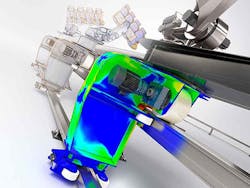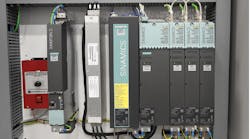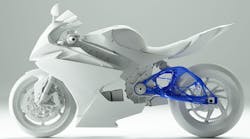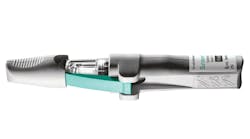Creativity is often thought of as an artsy, ephemeral thing that infects people in the marketing department, but it’s actually a very broad term with a definition derived from its application.
For engineers, creativity is the depth and breadth of structured knowledge, experience, and the application of those things in unconventional ways. That doesn’t sound very insightful, but it’s that bit about structured knowledge that sets creative engineering apart from creativity in other fields. There are lines that cannot be crossed, things that are impossible. There are ill-advised and dangerous things—and there are things that are just stupid. The creative engineer knows what those things are and works around them.
People like to say that engineers make the impossible possible, but that’s not accurate. They’re not doing the impossible; they’re maximizing the possible.
It’s that knowing, not the knowledge itself, that makes well-engineered design and engineers seem almost magical. The knowledge is available, for free and fee, from countless sources and built into powerful software tools. But it’s something that must be learned to harness; having access alone is not sufficient.
On the technical side, Finite Element Analysis (FEA) tools are my favorite example of this. AutoCAD Mechanical has a fairly impressive integrated FEA suite as part of the default install. You can use parameters extracted from your drawing or you can provide them from other sources, allowing you to confirm assumptions in an existing design or design new parts that meet your requirements from the beginning. It’s very impressive and it’s easy to use. Best of all, training for using these tools is readily available.
What’s not built-in, nor easily available, is the actual FEA. You must be able to understand the analysis or the tools are not just pointless, they can become dangerous. You can stretch and scale your design elements or keep plugging in values until you get the numbers you want, but the software isn’t going to tell you that what you’ve designed is going to kill everybody or that 4-40 screws don’t come in 12-foot lengths, or that the costs are high enough to fund your own space program.
The word finite should have been a hint that assembly/system-wide analysis is not something FEA does, yet people try to do that anyway. The software rightly assumes you know and understand FEA. The software publisher can train you to use their FEA tools, but they can’t teach you FEA. That’s something you must learn elsewhere.
Two real-world examples of inappropriate software applications are crowdfunding sites and, hilariously, myself. Kickstarter and Indiegogo are great, but they’re also case studies in misunderstood technology and wildly impractical expectations. When the knowing engineer is feeling blue they can browse crowdfunding campaigns and brighten their spirits at the expense of others because they can see what won’t work and imagine the conversations that will happen once others figure that out.
It wouldn’t be fair for me to say something like that without throwing myself in front of everybody so they can laugh at me. Humble pie is like vitamins for the ego; the taste is awful, but it’s good for you.
We’re currently making a part designed by another company’s in-house engineering staff. It’s sort of like a very complex jet from a carburetor. It’s made of a nickel superalloy with 40+ through holes of 0.0134 and 0.55-inch lengths as well as an extremely deep and narrow groove in the face. We’ve worked with the designer before and when they told me it ran fine in simulation, I took that at face value and moved the job off to production.
My failure to thoroughly analyze the part has yielded a job that’s eating custom ground carbide tools every three to five parts and the job is going to lose a ton of money. There are many failures involved here, but at their core is an overreliance on software.
In talking with others it’s evident this is more than a technology transition blip. The industry is expecting software to compensate for incomplete educations that are increasingly becoming more like user training. Prospective design engineering students are considering the software a college uses as a factor in choosing a school. An education in engineering is not the difference between AutoCAD and SolidWorks. That’s training.
A new graduate, or even a skilled tradesperson, knows their discipline is far more valuable than an AutoCAD power user and that’s something we can’t lose sight of. Training comes later and is the subject of a different article. The industry needs people who have been taught and people who know the subject matter—and that’s something software will (probably) never deliver.















